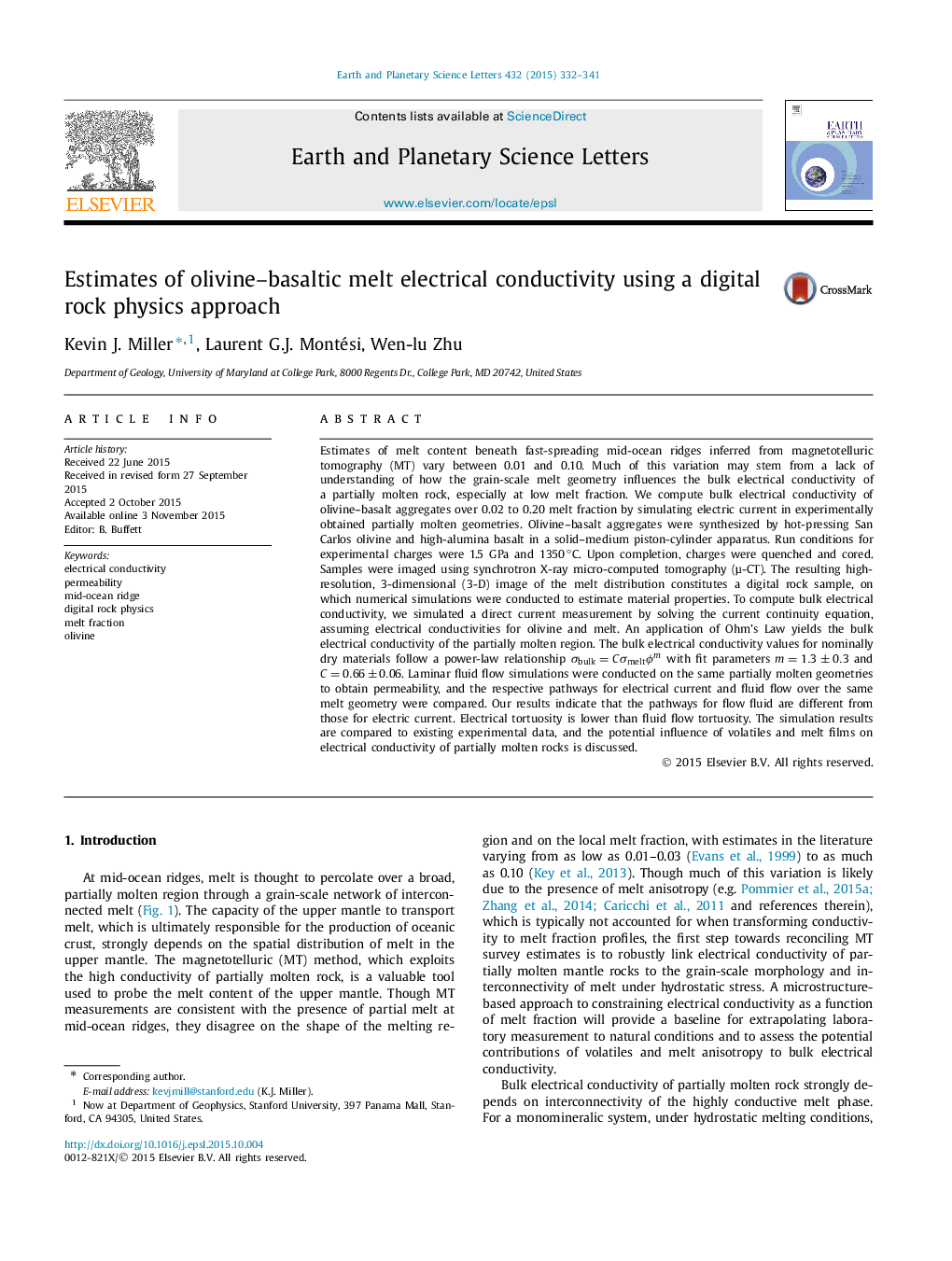| کد مقاله | کد نشریه | سال انتشار | مقاله انگلیسی | نسخه تمام متن |
|---|---|---|---|---|
| 6427862 | 1634724 | 2015 | 10 صفحه PDF | دانلود رایگان |
- Imaged olivine-basaltic melt microstructures using X-ray micro-computed tomography.
- Conducted direct current and laminar flow simulations using microstructure.
- Directly linked computed electrical conductivity to microstructure.
- Examined potential link between permeability and electrical conductivity.
- Discussed contribution of H2O to bulk electrical conductivity.
Estimates of melt content beneath fast-spreading mid-ocean ridges inferred from magnetotelluric tomography (MT) vary between 0.01 and 0.10. Much of this variation may stem from a lack of understanding of how the grain-scale melt geometry influences the bulk electrical conductivity of a partially molten rock, especially at low melt fraction. We compute bulk electrical conductivity of olivine-basalt aggregates over 0.02 to 0.20 melt fraction by simulating electric current in experimentally obtained partially molten geometries. Olivine-basalt aggregates were synthesized by hot-pressing San Carlos olivine and high-alumina basalt in a solid-medium piston-cylinder apparatus. Run conditions for experimental charges were 1.5 GPa and 1350â°C. Upon completion, charges were quenched and cored. Samples were imaged using synchrotron X-ray micro-computed tomography (μ-CT). The resulting high-resolution, 3-dimensional (3-D) image of the melt distribution constitutes a digital rock sample, on which numerical simulations were conducted to estimate material properties. To compute bulk electrical conductivity, we simulated a direct current measurement by solving the current continuity equation, assuming electrical conductivities for olivine and melt. An application of Ohm's Law yields the bulk electrical conductivity of the partially molten region. The bulk electrical conductivity values for nominally dry materials follow a power-law relationship Ïbulk=CÏmeltÏm with fit parameters m=1.3±0.3 and C=0.66±0.06. Laminar fluid flow simulations were conducted on the same partially molten geometries to obtain permeability, and the respective pathways for electrical current and fluid flow over the same melt geometry were compared. Our results indicate that the pathways for flow fluid are different from those for electric current. Electrical tortuosity is lower than fluid flow tortuosity. The simulation results are compared to existing experimental data, and the potential influence of volatiles and melt films on electrical conductivity of partially molten rocks is discussed.
221
Journal: Earth and Planetary Science Letters - Volume 432, 15 December 2015, Pages 332-341
